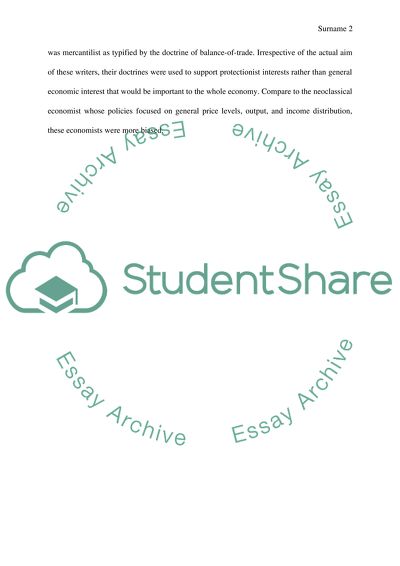Contents:


If the terms and conditions of the note are agreed upon between the company and the Creditor, the note is written, signed, and issued to the creditor. The treatment of notes payable can vary depending upon the standards of accounting and company norms. However, notes payable are always mentioned as liabilities on the balance sheet. As we mentioned above, notes payable are long-term liabilities, which means they are not current liabilities, which usually need to be paid monthly. It does still form part of the total liabilities on your balance sheet though. For the borrower, they are called notes payable, and for the lender they are called notes receivable.
Both of those amounts will be listed as notes payable, but the $60,000 will be listed as bank debt, and the $30,000 will be listed as other notes payable. At the same time, those amounts will be added to the assets list on the other side of your balance sheet as assets. Business owners record notes payable as “bank debt” or “long-term notes payable” on the current balance sheet. These agreements often come with varying timeframes, such as less than 12 months or five years. Notes payable payment periods can be classified into short-term and long-term. Long-term notes payable come to maturity longer than one year but usually within five years or less.

Other notes payable would be any money that you owe to any kind of financier with a long-term repayment plan. In other words, the notes payable definition is that it is any long-term loan you have to repay, whether it is secured or unsecured. Had you and your pal signed a written lending agreement, there would be no confusion over the amount or the time you expected payment back from them. Although that might not be a great way to sustain a friendship, it is what businesses do on a larger scale when it comes to financing through notes payable. But with accounts payable, there is no written promise involved. If a business’ accounts payable increase over a period of time, it means that the company has been purchasing more services or goods on credit rather than with cash.
Another related tool is an amortization calculator that breaks down every payment to repay a loan. It also shows the amount of interest paid each time and the remaining balance on the loan after each time. It increases a company’s debt capacity and, therefore, displays deeper financial stability. To properly manage either payable category, granular spend visibility is essential.
Why You Can Trust Finance Strategists
The present value technique can be used to determine that this implied interest rate is 12%. If the item is purchased outright for cash, its price would have been $15,000. On 2 January 2019, Ng Corporation agreed to purchase a custom piece of equipment. The signature of the person who issued the note with the date signed. Harold Averkamp has worked as a university accounting instructor, accountant, and consultant for more than 25 years.
You could’ve sworn you handed them a $20 bill at the cash-only bar, but they only sent you $10 via an app later that day. By now, the happy hour margaritas have gotten to your head, and you can’t remember the amount you lent to them in the first place. Whether you’re a beginner looking to define an industry term or an expert seeking strategic advice, there’s an article for everyone.
For a small business or a startup, notes payable may be a way to get off the ground, even if they’re just borrowing a small amount of money. Once you create a note payable and record the details, you must record the loan as a note payable on your balance sheet (which we’ll discuss later). The $40 monthly interest would be recorded as a credit to the cash account and as a debit to interest payable. Notes payable usually represent a mix of short-term liabilities, similar to those booked under accounts payable, and longer-term obligations. The cash account is a credit entry as the amount will decrease, given the pending interest payment.
How to Record a Note Payable With No Cash Deposit
In addition, Steve also statement of comprehensive income all Bob a 20% interest rate per year, payable every two months. Trade notes payable are documents that you send to a supplier with the commitment to pay the amount due after a certain period of time . The note payable amount can include the principal as well as the interest payment amounts due. Negotiable promissory notes are used extensively in combination with mortgages in the financing of real estate transactions.
The items purchased and booked under accounts payable are typically those that are needed regularly to fulfill normal business operations, such as inventory and utilities. Notes payable are created for high-risk situations that demand a formal contract. The amounts of money involved are often much higher and for riskier investments, like buying a new business property. On the other hand, accounts payable typically represent amounts due to suppliers and vendors of a company. Accounts payable involve no written agreements between a company and its vendors.
- While Notes Payable is a liability, Notes Receivable is an asset.
- Goods and services can be requisitioned from the same suppliers across all departments, cleaning up your supply chain and greatly reducing errors.
- If it is appropriate, the company records it as accounts payable as long as it has not been paid in cash.
- Therefore, late payments are not disclosed on the balance sheet for accounts payable.
- I have a high degree of resourcefulness, diligence, and dependability.
Themaker of the notecreates theliabilityby borrowing funds from the payee. The maker promises to pay the payee back with interest at a future date. The maker then records the loan as a note payable on its balance sheet. Thepayee, on the other hand records the loan as a note receivable on its balance sheet because they will receive payment in the future. The amount debited to a company’s notes payable is usually received from banks, credit companies, and other financial institutions. The cash is a debit entry as it is an asset in the above scenario.
Notes Payable vs. Accounts Payable: The Difference Cuts Cost
Therefore, late payments are not disclosed on the balance sheet for accounts payable. Amounts listed on a balance sheet as accounts payable represent all bills payable to vendors of a company, whether or not the bills are more or less than 30 days old. Notes payable agreements are written and include documents like loan contracts. These are very formal agreements, and they are frequently complicated and lengthy. For example, a company shouldn’t pay dividends to investors, while part of the loan is still unpaid. You can compare the rate you’d earn with notes payable to rates on similar assets such as fixed-rate bonds, Treasuries, or CDs as you decide whether they would be right for your portfolio.
To enable you to do this, this post will look at notes payable in more detail and show you what they are, what information they should contain, and how you should account for them. During the course of business, it’s inevitable that you’ll come across a note payable at some stage or another. When you do you must understand what it is, how it works, and what its requirements are. It is within an organization’s best interest to keep the overall cash conversion cycle in check and ensure that all liabilities are honored per their commitment.
Bank of Nova Scotia : Issuer Document – Marketscreener.com
Bank of Nova Scotia : Issuer Document.
Posted: Wed, 12 Apr 2023 13:30:26 GMT [source]
https://1investing.in/ will lease equipment when they can’t afford the immediate capital expenditure involved with directly purchasing it. Looking for ways to streamline and get clearer insights into your AP and AR? BILL’s financial automation can help you do both and free up bandwidth to focus on your core mission. Take a few pages out of WeWork’s playbook and learn how automation can solve some of the greatest challenges facing your finance team. Goods and services can be requisitioned from the same suppliers across all departments, cleaning up your supply chain and greatly reducing errors.
If a company is asking for the original credit period to be extended for the amount owed, they will usually need to provide a signed note. This note transfers the liability for the loan agreement from accounts payable into notes payable. If the amount is due before the end of the year after the date that the balance sheet was prepared, the notes payable is classified as a current liability. Interest must be calculated using an estimate of the interest rate at which the company could have borrowed and the present value tables.

Some of these normal operating costs include salaries payable, wages payable, interest payable, income tax payable, and the current balance of a long-term debt that will be due within a single year. On issuance, the journal entry to record the bond is a debit to cash and a credit to bonds payable. Financial liabilities , such as promissory notes and corporate bonds. An aging schedule showing the amount of time certain amounts are past due may be presented in the notes to audited financial statements; however, this is not common accounting practice.
Consider them carefully when negotiating the terms of a note payable. Notes payable usually include the borrowed amount, interest rate, schedule for payment, and signatures of the borrower and lender. Thus, S. F. Giant receives only $5,000 instead of $5,200, the face value of the note.
Fortunately, many financial services lawyerscan help you when it comes to notes payable and give you the advice you need. If you need any more information on notes payable or advice regarding them, feel free to visit our website where you’ll find many other resources. Here, Steve will credit the interest payable account with the amount of interest due, which, in this case, amounts to $2,000. He will also debit the interest expense account with the same amount. Keep in mind, though, that these are just examples of where notes payable may be used and there are many more, depending on the type of business you have. Refer Set up and process trade notes payable for details on how to select the steps for each type of trade note.
This also means the company’s future cash flow is leveraged for an extended period. High long-term debt balances can severely restrict a company’s ability to grow, because it limits access to new loans and investment. The balance in the notes payable account represents the total amount that still needs to be paid against all promissory notes the company has issued. In the majority of circumstances, promissory notes are made payable in a year’s time and the balance of notes payable is there for a reported as a current liability in the balance sheet.
Some companies might also perform this function in the short term so certain Financial Ratios are in balance or are ok with other debt covenants that it may have. As a company grows it expects that its future cash flow will be more than substantial to account for the note principal as well as the interest. The term long-term notes payable refers to an agreement a company enters into with another party, which includes a formal written promise to pay pre-determined amounts on specific dates. To be categorized as a long-term note payable, the maturity of the note must be longer than one year or operating cycle. Both long-term and current notes payable appear in the liabilities section of a company’s balance sheet.
